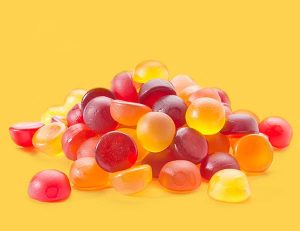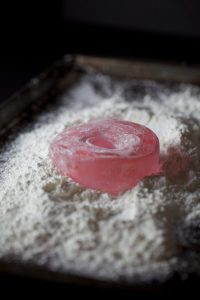
It’s common knowledge that gummy bears are one of the oldest confectioneries around. Gummies have been a favorite of children, and adults alike, since their invention. Nowadays, you can find gummy candy in every supermarket candy aisle. But while they are so popular nowadays, many people don’t realize how they’re made.
What is the process for making gummy bears? The process can depend on the type of jelly gummy being made. A few process steps are common across the board and apply equally to both homemade and commercial products.
Formulating the Recipe
Gelatin, glucose, and water are used to make jelly gummies. To make a gel, these three materials are heated and then chilled. After that, the gel is put into molds to set.
The development of the recipe is the first step in making jelly gummies. The recipe calls for three primary components, which are as follows:
One of the most crucial components of jelly gummies is water. It weighs around 80% of the whole thing. The other ingredients in the recipe can mix into a solid mass that can be shaped into various shapes thanks to its role as a binding agent, which helps them all come together.
Gelatin: Another component utilized in jelly gummies is gelatin. It creates a gel when combined with water at high temperatures, giving the finished product texture and structure (about 145 degrees Fahrenheit). After cooling to ambient temperature once more, this gel can be poured into molds and made into any shape or size required.
Because glucose is naturally sweet, jelly gummies don’t need to be made with extra sweeteners to achieve sweetness and flavor. After the food has been baked in an oven, glucose aids in rehydrating it.
Cooking and Combining
We combine the ingredients first. The mixture is then heated slowly until a specified temperature is reached. Because it affects the final product’s quality, this phase is crucial. The gelatin will be overdone and may not be set correctly if the temperature is too high. It will take a long time to cook and might not be set correctly if the temperature is too low.
Setting and Cooling
Pouring the mixture into molds and letting it sit until it completely hardens occurs once the mixture has cooled down enough to get the desired texture. Depending on how thick you want your candy to be, this last stage might take anywhere from 30 minutes to several hours.
Forming and Cutting
The candy must be cut into pieces after it has been prepared. With a machine that can cut the candy off a sheet, this is often done by hand. A guillotine cutter removes the extra material from the jelly gummy on both sides, which is the most typical tool for doing this.
Forming is the following stage in the procedure. The most common shapes for jelly gummies are cubes, spheres, and rectangles. Before or after cutting out your jelly gummies, you can shape them using various molds. A common piece of equipment for this is an extruder, which uses pressure to force jelly gummies out of a long nozzle known as an auger barrel. The candy can be heated in the barrel to melt it completely, and then pushed out via tiny holes (known as dies).
Coating
Sugar syrup is used to cover the jelly gummies, which helps them keep their shape and makes them seem shiny. The coated product is fried under carefully regulated circumstances utilizing continuous frying machines with revolving trays. Depending on the flavor of the jelly gummies that are wanted, the coating material may be either sugar or sugar syrup. Jelly gummies may occasionally also be coated with additional coatings, such as chocolate.
Packaging and Sorting
The jelly gummies are produced, sorted, packaged, and kept in storage before being sold. All of the gummies are uniform in size and color thanks to sorting. The gummies are placed in bags or cartons before being packaged for retail sale.
Packing and storing make up the manufacturing process for jelly gummi candies. To make shipping to stores across the nation simple, the makers pack each bag or box into a cardboard box with a label in this phase. They will be unpacked and placed on shelves for people to purchase once they have reached the retailers.
 Commercial Gummy Formulation Support
Commercial Gummy Formulation Support


